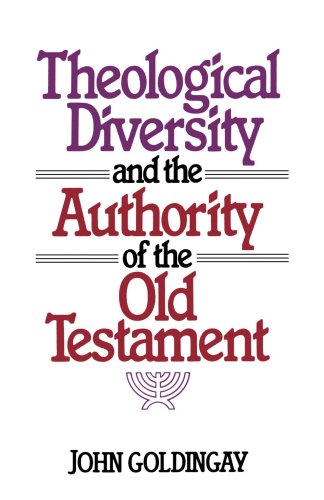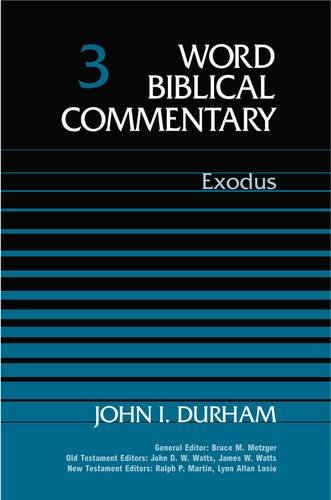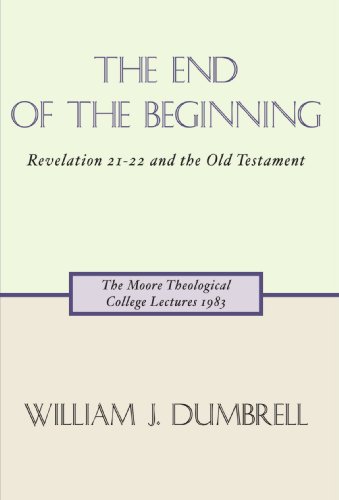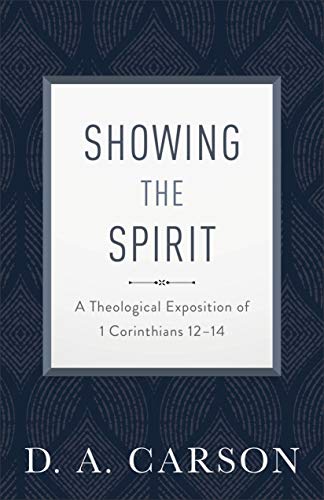Volume 15 - Issue 2
A survey of church history articles 1986–9
By Martin DavieEchoing the words of Ecclesiastes 12:12, it can safely be said that ‘of the making of articles on church history there is no end’, and to survey them all would cause great weariness of the flesh both to the surveyor and his readers! This review is therefore not intended to be an exhaustive survey of all articles on church history produced from 1986 to 1989; rather, the articles mentioned are those I personally found interesting, and ones which I think may interest others.
If I have omitted your favourite article or the one you have written, my apologies to you.
The articles are arranged under three headings. These are: ‘Patristic and Mediaeval’, which covers church history prior to the Reformation; ‘Reformation’, which covers the 16th and 17th centuries; and ‘Enlightenment and Modern’, which covers the history of the church from the 18th century to present day.
Patristic and mediaeval
Dan G. McCartney, ‘Literal and Allegorical interpretation in Origen’s Contra Celsum’, Westminster Theological Journal XLVIII, Fall 1986.
As the title suggests, McCartney examines Origen’s literal and allegorical interpretation of Scripture as exemplified in the Contra Celsum. His conclusion is that Origen interpreted the Bible literally ‘when intellectual proof was required’, but allegorically ‘where edification and stimulation were involved’.
Alvyn Petersen, ‘Did Athanasius deny Christ’s fear?’, Scottish Journal of Theology 39 No. 3, 1986; and ‘The Courage of Christ in Athanasius’, Scottish Journal of Theology 40 No. 3, 1987.
In the first of this pair of articles Petersen contends that given the parameters within which he was writing, Athanasius’ treatment of Christ’s fear is ‘poignantly realistic’. In the second, he argues that Athanasius portrays Christ as manifesting courage by showing ‘confidence in God’ and ‘willing obedience to and acceptance of the divine will despite the fearsome situations in which the individual is found’.
David Wright, ‘The origins of Infant Baptism—Child Believer’s Baptism?’, Scottish Journal of Theology 40 No. 1, 1987.
Debate continues about the origins of infant baptism, and Wright contributes to this debate by suggesting that the idea that infant baptism originated as an extension of the baptism of believing children is an ‘increasingly attractive hypothesis’. An issue which Wright does not tackle, but one which is nevertheless important, is that of the theological significance of his suggestion. If infant baptism did have its origins in the baptism of believing children, in what ways should this affect our baptismal policies today?
Michael Root, ‘Necessity and Unfittingness in Anselm’s Cur Deus Homo’, Scottish Journal of Theology 40 No. 2, 1987.
In his Cur Deus Homo St Anselm sought to show why Christ’s incarnation was necessary. In his examination of this work Root argues that Anselm’s attempt to prove the necessity of God’s action in Christ is flawed because it does not allow God freedom to act in new and creative ways after his initial creation of the world.
Ruth M. Siddals, ‘Logic and Christology in Cyril of Alexandria’, Journal of Theological Studies n.s. 38 pt. 2, October 1987.
Anyone interested in patristic Christology should note this article by Siddals in which she maintains that Cyril’s use of Aristotelian and Porphyrian logic needs ‘to be recognised in any evaluation of Cyril’s theology, and indeed, in any assessment of the Nestorian controversy’. If Siddals’ interpretation of Cyril is correct, however, the question still needs to be asked whether Cyril’s use of logic clarified or distorted his understanding of the biblical witness to Christ.
Arthur J. Droge, ‘Justin Martyr and the Restoration of Philosophy’, Church History 56 No. 3, September 1987.
In this article Droge examines the claim made by Justin Martyr in his ‘Dialogue with Trypho’ that Christianity is the true philosophy, and argues that it has its background in the thought of the second-century Middle Platonist, Numenius of Apamea, and the intellectual movement of which he was a part. A helpful article for those seeking to understand the background to the thought of Justin and of the patristic apologists in general.
- F. Torrance, ‘Physikos kai Theologikos Logos, St Paul and Athenagorus at Athens’, Scottish Journal of Theology 41 No. 1, 1988.
As part of his continuing attempt to expound the thought of the Fathers and their contemporary relevance, Torrance looks at the teaching on creation, providence and resurrection in the work of the second-century apologist Athenagoras. He concludes that Athenagoras helped to lay the basis for that idea of the contingent and rational nature of the universe which underlies modern scientific discovery, and that he ‘integrated physical and theological ingredients in our knowledge of God and his interaction with the universe’ in a way that has much to offer to the continuing dialogue between theology and natural science.
- A. Noble, ‘Gregory Nazianzen’s Use of Scripture in defence of the Deity of the Spirit’, Tyndale Bulletin 39, 1988.
With the current interest in hermeneutics it is instructive to see how a Christian of the past used Scripture in the construction of doctrine. Noble enables us to do this in this Tyndale Christian Doctrine lecture for 1987 in which he considers Gregory Nazianzen’s use of Scripture in defence of the deity of the Spirit in the last of his ‘Five Theological orations on the Trinity’. He shows how Nazianzen argues that the deity of the Spirit coheres with the doctrine of the Trinity, that the Spirit’s deity is implied in Scripture when not explicitly stated, that the Spirit’s deity was revealed after Pentecost, and that there are explicit Scriptural testimonies to the Spirit’s being truly God.
- J. Edwards, ‘Gnostics and Valentinians in the Church Fathers’, Journal of Theological Studies n.s. 40 No. 1, April 1989.
The early heretic Valentinus is normally described in theological textbooks such as J. N. D. Kelly’s Early Christian Doctrines as a Gnostic. Edwards, however, points out that neither Valentinus himself nor any of the early Fathers used this description of him, and gives reasons to explain why this was the case. This article should be read by anyone who has to write an essay on Gnosticism!
Oliver Nicholson, ‘Flight from persecution as imitation of Christ; Lactantius Divine Institutes IV, 18, 1–2’, Journal of Theological Studies n.s. 40 No. 1, April 1989.
In this article Nicholson examines Lactantius’ justification of flight from persecution, and seeks to show that it was part of a widespread ‘spirituality of flight’ in the early church which ‘made sense of the suffering of the refugee by encouraging him to trust in God’s providence’. An article that is worth pondering as a reminder that those who flee persecution may be seeking to obey God just as much as those who stay to face it.
- S. Davies, ‘The Origin and Purpose of the Persecution of AD 303’, Journal of Theological Studies n.s. 40 No. 1, April 1989.
Lactantius argued in the De Mortibus Persecutorum that Galerius was the evil genius behind the persecution of AD 303, and this idea has been generally accepted by modern scholarship. Davies, however, attempts to prove that it was in fact Diocletian who was responsible for the persecution, and that Lactantius blamed Galerius for reasons that had more to do with apologetics than with knowledge of what had really taken place. He also explains why he thinks Diocletian started it and why in AD 303.
Reformation
Lynne Courter Boughton, ‘Supralapsarianism and the role of Metaphysics in Sixteenth Century Reformed Theology’, Westminster Theological Journal XLVIII, Spring 1986, No. 1.
The question addressed in this article is how the early reformers’ belief in predestination developed into the supralapsarian doctrine which held that God decided between the elect and the reprobate before the fall of Adam. Boughton notes that: ‘several scholars have assumed that metaphysics was the perturbation in Reformed theology that turned the mystery of predestination into the doctrine of supralapsarianism’, but argues that ‘a case can be made for supralapsarianism being both independent of traditional scholastic metaphysics and faithful to the early Reformers’.
Rudi Heinze, ‘Martin Luther—A Pathfinder?’, Churchman 100 No. 2, 1986.
In this article Heinze maintains that Luther’s unique contribution to theology was his teaching that ‘the righteousness of Christ was always external and alien and can never be said to belong to human beings. It is entirely a free gift and the sinner has no role to play in his justification’. A clear introduction to Luther’s distinctive teaching on justification.
Jill Raitt, ‘Beza, Guide for the Faithful Life’, Scottish Journal of Theology 39 No. 1, 1986.
Theodore Beza is normally seen as an academic theologian, but he was also a pastor. Raitt looks at his pastoral teaching and concludes that: ‘Beza worked hard to be a good shepherd, drawing from Scripture the doctrine that nourished the faithful’. A useful article that draws attention to a neglected area of Beza’s teaching, and reminds us that theology needs to be pastorally applied!
Alan C. Clifford, ‘John Calvin and the Confession Fidei Gallicana’, Evangelical Quarterly LVIII No. 3, July 1986.
The Confession of Faith drawn up by Calvin and his pupil De Chadieu, and adopted by the First National Synod of French Protestants in 1559, has tended to be neglected in favour of other reformed statements of faith such as the ‘Westminster Confession’ of 1643. Clifford maintains, however, that such neglect is unjustified because: ‘It becomes increasingly clear that the Confessio Fidei Gallicana is, for all its neglect, a model confession. The range and character of its statements fully reflect the chaste balanced biblicism of John Calvin, anxious as he always was to avoid any unwarranted extra-scriptural speculation.’
Avihu Zakai, ‘The Gospel of Reformation: The Origins of the Great Puritan Migration’, Journal of Ecclesiastical History 37 No. 4, October 1986.
In this study of the origins of the Puritan migration to America in the 17th century, Zakai argues that this migration was not caused by any great crisis in English society as a whole. It was instead the result of increasing strife between Puritans and their non-Puritan neighbours, and the lessening of prospects for a Puritan reform of the church at a local level. To put it simply, it was the attitude of their neighbours and state of their local churches that made the Puritans leave for America.
Robert Letham, ‘Theodore Beza: A reassessment’, Scottish Journal of Theology 40 No. 1, 1987.
As I have said, Beza is normally seen as an academic theologian. He is also widely perceived to be the villain who was responsible for the corruption of Reformed theology by encouraging it to move away from the biblically based thought of Calvin. In this reassessment of Beza, Letham accepts that he gave a warmer welcome to scholastic methodology than did Calvin, and that he firmly defended limited atonement while Calvin did not, but contends nevertheless that Beza’s ‘overall thought on predestination and on its relationship to christology, his formulations on faith and assurance in connection with election, Christ, sanctification and the Spirit all undermine the idea of a deep-seated departure from his predecessor’.
John E. Colwell, ‘A radical Church? A reappraisal of Anabaptist Ecclesiology’, Tyndale Bulletin 38, 1987.
The Anabaptist understanding of the church and its relationship to society was very different from that of the major reformers such as Luther or Calvin. In the Tyndale Historical Theology lecture for 1987, Colwell seeks to explain this difference in terms of Anabaptist eschatology. He argues that it was the eschatology of the mainstream Anabaptists which determined their views on separation from the world, the necessity for purity of life among believers, church discipline, and their rejection of the right of the state to coerce people in matters of religious belief.
- P. Stephens, ‘Huldrych Zwingli: The Swiss Reformer’, Scottish Journal of Theology 41 No. 1, 1988.
In this inaugural lecture as Professor of Church History at Aberdeen, Stephens states that: ‘There is a thread that runs through the whole of his theology, a conviction that colours every view he expresses. It is the sovereignty of God or the glory and honour of God’, and shows how this central idea finds expression in Zwingli’s thoughts on ‘true and false religion’, ‘the Bible’, ‘the state’, ‘the sacraments’, and ‘the providence of God’.
- Alton Templin, ‘The individual and society in the thought of John Calvin’, Calvin Theological Journal 23 No. 2, November 1988.
A concise introduction to Calvin’s thought on the individual and society which looks at what he had to say about ‘the human being as an individual’ and ‘social organization as the arena of God’s activity in the world’, and which suggests some contemporary implications of his teaching on these matters.
Enlightenment and modern
Keith Clements, ‘Bonhoeffer: Theist or Moralist?’, Theology LXXXIX No. 729, May 1986.
In this article on Bonhoeffer’s ethics, Clements argues against Stewart Sutherland’s interpretation of Bonhoeffer in his book God, Jesus and Belief, and maintains that Bonhoeffer’s ethics only make sense if they are seen as centred on God and his saving action. On the basis of certain passages in his Letters and Papers from Prison, writers such as Sutherland and the late John Robinson have portrayed Bonhoeffer as one who abandoned the traditional Christian belief in a transcendent God. It is good to be reminded by Clements that this was not the case, and that Bonhoeffer’s thought was actually based on such a belief.
Timothy Bradshaw, ‘Karl Barth on the Trinity: A family resemblance’, Scottish Journal of Theology 39 No. 2, 1986.
Barth’s work on the Trinity has been called the greatest work on the subject since the Reformation or even Augustine. Bradshaw’s article examines Barth’s doctrine of the Trinity and the influences which shaped it, and concludes that ‘Barth’s trinitarian doctrine needs to be interpreted as drawing from, not only the classical tradition but also idealism and existentialism’. For me, this conclusion raises a further theological question. If Bradshaw is right, how is the validity of Barth’s thought on the Trinity affected by the influence of idealism and existentialism upon it?
Nigel Scotland, ‘Darwin and Doubt and the Response of the Victorian Churches’, Churchman 100 No. 4, 1986.
The 19th century is often depicted as a time of conflict between ever-widening knowledge and an obscurantist Christianity which fought this new knowledge all the way along the line. The truth was, in fact, more complex, and Scotland reflects it in this article in which he explores how the Victorian churches responded to scientific discovery and biblical criticism with either ‘immediate, enthusiastic acceptance’, or ‘open hostility’, or a ‘cautious but general’ willingness to accept some of their findings.
Christina A. Baxter, ‘Barth—A Truly Biblical theologian?’, Tyndale Bulletin 38, 1987.
Many evangelicals are suspicious of Barth and regard his work as unbiblical. In this Tyndale Historical Theology lecture, Baxter considers the question as to whether Barth was a biblical theologian. The conclusion she reaches is that Barth’s theology was truly biblical in intention since he was a theologian who was concerned ‘that not only the content of his dogmatics but also his method should be in accordance with scripture’, but that human error and fallibility meant that this intention was not always carried out in practice.
Norman H. Murdoch, ‘Evangelical Sources of Salvation Army Doctrine’, Evangelical Quarterly LIX No. 3, July 1987.
A fascinating article on a little-known subject which shows how Salvation Army doctrine was influenced by the nine-point statement of faith produced by the Evangelical Alliance in 1846, and the Wesleyan-Arminian ‘holiness’ teaching of the visiting American preachers Phoebe Palmer and Robert and Hannah Pearsall Smith, and how the broad statement of faith adopted by Booth’s Christian Mission in 1865 became a distinctively Wesleyan creed by 1876.
Robert R. Cook, ‘Soren Kierkegaard: Missionary to Christendom’, Evangelical Quarterly LIX No. 4, October 1987.
This article by Cook is intended to dispel evangelical ignorance about Kierkegaard and would make a good starting point for anyone wanting to find out about Kierkegaard and his teaching. Cook defends Kierkegaard against the charges that he was a mystic, a pelagian, or a fideist, and expounds Kierkegaard’s thought on mediocrity, individuality, detachment, subjectivity, fame and purity of heart.
John Conway, ‘How shall the Nations Repent? The Stuttgart Declaration of Guilt, October 1945’, The Journal of Ecclesiastical History 38 No. 4, October 1987.
In October 1945 the council of the Protestant Church in Germany produced a ‘public acknowledgement of responsibility and guilt’ for their inadequate response to Nazism. Conway looks at the background, weaknesses and significance of this ‘Stuttgart Declaration’ in an article which is worth pondering by anyone who is interested in the political responsibility of the church (and that should be everyone!), and which provokes thought about what God might be asking the church to repent of today.
Samuel T. Logan, ‘Where have all the tulips gone?’, Westminster Theological Journal L No. 1, Spring 1988.
Despite the title, this is not an article which has escaped from Gardeners’ World! It is in fact an examination of the decline of orthodox Calvinism in New England between 1630 and 1776, due to the desire for human freedom being given higher priority than zeal for God’s glory and the holiness of his people. An article which is worth looking at for the questions it raises about whether Calvinism and modern notions of political liberty and human autonomy are compatible. Does an emphasis on the sovereignty of God necessarily mean a devaluation of human freedom?
Arthur Bennett, ‘Charles Simeon: Prince of Evangelicals’, Churchman 102 No. 2, 1988.
Charles Simeon provided a role model for generations of evangelical Anglican clergy and this article by Bennett provides a good introduction to why this was the case. An article which can be recommended to anyone who wants a clear and concise summary of Simeon’s life and thought.
Mark A. Noll, ‘Revival, Enlightenment, civic humanism and the development of dogma: Scotland and America, 1735–1843’, Tyndale Bulletin 40, 1989.
In an article which complements the one by Logan mentioned above, Noll examines the reasons why American theology moved away from Calvinism during the period with which he is concerned, while in Scotland Calvinism remained dominant, He also adds a ‘homily’ explaining how the history he has outlined indicates that secularization needs to be resisted on an institutional and existential level, as well as on a theological level, and that non-theological factors have to be taken into account when looking at the development of dogma. A brilliant article which should interest those who want to know about Scottish and American church history, how theology can avoid being controlled by non-theological factors, or how to study the way in which doctrine develops.
Martin Davie
Ware






